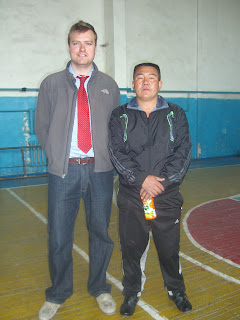The Men behind the Project
(read their own words about the impact of this community)
as through a translator
Asan (head researcher/Athletic dept.)
“With the current state of our resources, the only activity or lesson that we are able to prepare for classes contains just basic stretching and running. Needless to say, the students don’t have very much fun.”
Marhamet
"Without quality basic resources, we cannot have effective classes on any level. If we can provide the resources necessary for class, we would see immediate and impactful results.”
Aldabergen
"It is difficult for the sports teachers to gain the confidence and respect of not only the students, but also the teachers themselves. Resources, which will allow for real classes, will not only benefit the students, but perhaps more importantly, allow the teachers to reach their own potential as teachers, boosting confidence and allowing them to be real educators. The current stigma within the school community is that we aren’t “real teachers” – and this is directly due to our inability to have any form of substance in our classes. Resources would directly end this stereotype while giving us the support and tools required to finally make a difference in the lives of our students, as well as for ourselves.”
“Currently, all of the sport classes are insufficient and viewed as a waste of time by the students. With resources, our classes can finally have substance while increasing the participation, interest, and athletic competence of the students.”
“The most important resources are those that are the most basic. Currently students cannot participate in basketball, volleyball, soccer, or any beginner level of athletics (such as even jump ropes). These basic resources are the focus of this project and without a doubt the number 1 priority.”
Asgat
“The only way that we can prepare for any athletic competition is by the resources provided by either the student’s families - or out of our own pockets as teachers (making about $200 a month). This further leads to discrimination and segregation between the poorer and richer students at school – between the students whose families can afford to provide a ball for them to use and those families who cannot.”





